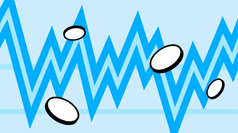Wyckoff theory: what is it, and how does it work?
November 21, 2024
5 min

Wyckoff theory is one of the most respected trading and technical analysis methodologies. Developed by American investor Richard Wyckoff in the 1930s, it offers a systematic approach to understanding market movements, focusing on cycles of accumulation and distribution.
Although initially designed for stock markets, Wyckoff’s principles can be applied to various asset classes, including commodities, stocks, currencies, and cryptocurrencies. This methodology not only aids in identifying investment opportunities but also provides insights into risk-reward management, giving traders a strategic view of market conditions.
The five fundamental principles of Wyckoff Theory
Wyckoff theory is based on five foundational principles that help traders understand market behaviour and make more informed investment decisions.
- The market operates in cycles: Wyckoff observed that markets move through cycles of accumulation and distribution, often influenced by large financial institutions. During accumulation, institutions buy assets quietly, pushing prices upwards. In distribution, they sell before prices start to decline.
- Law of supply and demand: This basic yet powerful market law states that prices rise when demand exceeds supply and fall when supply exceeds demand. According to Wyckoff, a trader’s primary task is to analyse volume and price movements to understand where the market sits within this balance.
- Effort vs. result: Wyckoff believed in a relationship between “effort” (trading volume) and “result” (price movement). If high trading volume results in minimal price movement, it may indicate market resistance and an upcoming reversal.
- Cause and effect: This principle applies to accumulation and distribution. In the accumulation phase, the “cause” is large-scale buying by institutions, leading to the “effect” of rising prices. In distribution, the “cause” is selling, with the “effect” of falling prices.
- Market testing: Wyckoff recommended “testing” techniques to confirm if the market is in an accumulation or distribution phase. These tests include volume analysis, price movement, and other technical indicators to validate market direction before making a position.
Wyckoff’s market phases
A core aspect of Wyckoff’s theory is that markets move in cycles. These phases are particularly useful for identifying ideal entry and exit points. Let’s explore them in detail:
- Accumulation: In this phase, the market is relatively flat. Large institutional investors gradually buy assets without drastically raising prices. This phase is often characterised by minor price fluctuations but high trading volumes.
- Markup: Following accumulation, prices begin to rise more visibly. Retail investors often enter at this stage, drawn in by the upward trend. Institutions that have accumulated assets in the previous phase start profiting from the price increase.
- Distribution: Institutions start to sell off their holdings, taking profits after the price rise. This phase often shows price consolidation with sideways movements and high trading volumes.
- Markdown: After distribution, prices begin to fall. Institutions have sold most of their positions, and prices drop due to insufficient demand to sustain the previous levels.
The importance of charts and volume in Wyckoff theory
A key element of Wyckoff’s theory is the analysis of price charts and trading volume. Wyckoff believed traders could “read” the market by observing the relationship between price and volume. For example, a price increase with rising volume suggests that demand is outpacing supply, while an increase in price with falling volume could indicate weakness in the bullish trend.
Volume analysis is instrumental during the accumulation and distribution phases, where market movements may be subtler. Accumulation might show high volumes in consolidation periods, while distribution may exhibit high volumes without a corresponding price increase.
A practical example: the accumulation phase
Let’s apply Wyckoff’s theory to a stock chart. During consolidation, you may observe high volumes without a significant price increase. This could signal that institutions are quietly accumulating stock in anticipation of a future price rise. Once prices start to rise with increased volume, indicating a markup phase, it could be an opportune time to enter the market.
Similarly, if you observe high volumes during consolidation followed by a price decline and further high volumes, this could indicate a distribution phase where institutions sell off their holdings. In this case, it would be wise to exit the market before prices fall further.
Conclusion
Wyckoff’s theory offers a structured and systematic approach to financial market analysis. By observing volume, price movements, and market cycles, traders can identify trading opportunities and manage risk more effectively. Though developed nearly a century ago, Wyckoff’s theory remains relevant and widely used by traders worldwide. As with any trading strategy, successful application requires practice and a deep understanding of its principles.


